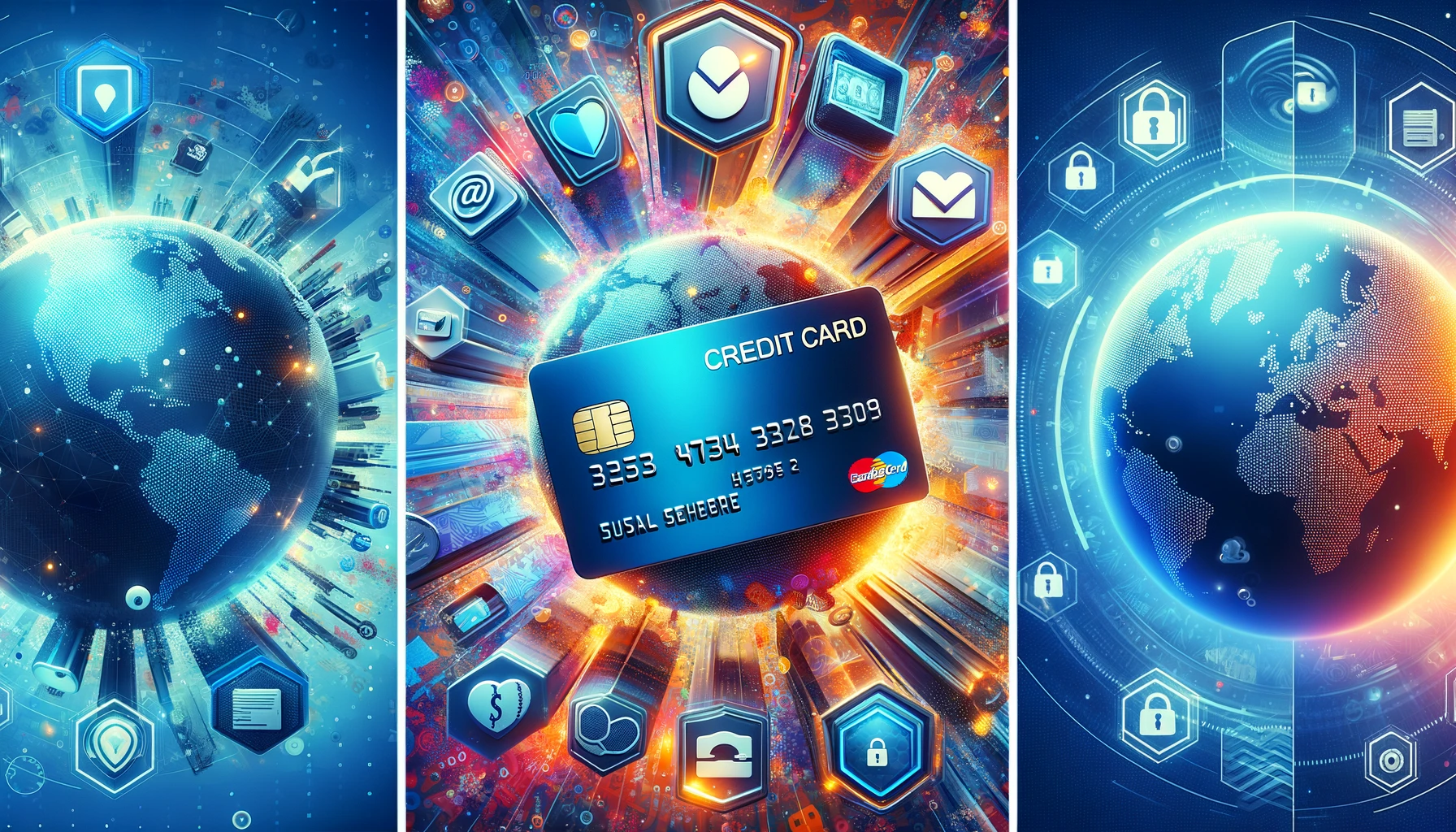Mastercard is a renowned global payment technology company that has significantly impacted the financial industry. Founded with a vision to revolutionize digital payments, Mastercard has evolved into a key player in the financial services sector. Let’s explore the key milestones and impact of Mastercard’s journey through time.
Key Takeaways
- Mastercard was founded in 1966 by a group of visionary individuals with the aim of simplifying and enhancing payment transactions.
- Mastercard’s global reach spans across multiple countries, making it a leading player in the payment technology industry.
- Technological innovations have been a key driver of Mastercard’s growth, enabling secure and efficient payment solutions for consumers and businesses.
- Mastercard’s commitment to financial inclusion has led to the implementation of various initiatives to provide access to digital payments for underserved communities.
- Despite regulatory challenges, Mastercard continues to adapt and innovate, shaping the future of the financial industry.
The Founding of Mastercard
The Vision Behind Mastercard
The inception of Mastercard was driven by a vision to create a world beyond cash, where transactions could be made quickly, safely, and conveniently. The idea was to simplify the way people pay for goods and services, transforming the financial landscape with a universal payment solution.
- To provide a seamless payment experience across various merchants and banks.
- To enhance financial security by reducing the reliance on physical cash.
- To foster global economic connections through an efficient electronic payment network.
Mastercard’s vision was not just about advancing payment systems, but also about fostering economic growth and financial inclusion by connecting people and businesses around the world.
This vision laid the groundwork for what would become a cornerstone of the modern financial industry, with Mastercard at the forefront of the digital payment revolution.
The Founders
The foundation of Mastercard was the result of the collaborative efforts of several major banks looking to create a competitor to the BankAmericard, which later became Visa. The key players in the formation of Mastercard were a group of banks that recognized the potential of a unified credit card system.
- United California Bank
- Wells Fargo
- Crocker National Bank
- Bank of California
These institutions aimed to create a credit card that was universally accepted, breaking the barriers of individual bank cards. The Interbank Card Association (ICA) was formed to manage this new credit card, which would eventually be known as Mastercard.
The goal was clear: to establish a payment method that would be widely accepted and convenient for consumers, enhancing the shopping experience and fostering financial mobility.
The Launch of Mastercard
Mastercard was officially launched in 1966 as a response to the emerging need for a convenient and secure payment method that could transcend local boundaries. Initially introduced as "Interbank Card," the company rebranded to "Master Charge" in 1969, before finally settling on the name "Mastercard" in 1979.
The introduction of Mastercard revolutionized the financial landscape by offering a credit card that was universally accepted by merchants and financial institutions alike. This innovation not only facilitated easier transactions for consumers but also paved the way for the global expansion of credit card usage.
- 1966: Official launch as Interbank Card
- 1969: Rebranding to Master Charge
- 1979: Final rebranding to Mastercard
Mastercard’s launch marked the beginning of a new era in consumer finance, providing a level of convenience and security that was previously unattainable. Its success laid the groundwork for the widespread adoption of electronic payments and the eventual move towards a cashless society.
Mastercard’s Growth and Expansion
Global Reach
Mastercard’s expansion beyond its American roots has been nothing short of remarkable. Mastercard holds a substantial global footprint, facilitating transactions in over 210 countries and territories. This extensive reach has allowed Mastercard to become a ubiquitous presence in the global financial landscape, supporting commerce across a diverse array of cultures and economies.
Mastercard’s ability to process transactions in multiple currencies and its adoption by numerous banks worldwide have been pivotal in its global expansion. The network’s adaptability and strategic partnerships have played a crucial role in establishing its international presence.
The following table illustrates Mastercard’s global reach in terms of the number of countries and territories served, as well as the variety of financial institutions that have adopted its services:
| Region | Countries/Territories Served | Partner Financial Institutions |
|---|---|---|
| Americas | 50+ | 1,000+ |
| Europe | 40+ | 2,000+ |
| Asia-Pacific | 45+ | 1,500+ |
| Middle East & Africa | 70+ | 500+ |
Mastercard’s network not only spans across geographical boundaries but also caters to a wide spectrum of consumers and businesses, from small local vendors to large multinational corporations.
Technological Innovations
Mastercard has consistently been at the forefront of technological innovation in the financial sector. The introduction of contactless payment technology by Mastercard marked a significant shift in how transactions are processed, offering speed and convenience to both merchants and consumers.
- Mastercard’s PayPass system, launched in the early 2000s, allowed for faster checkout times and increased security.
- The company has invested heavily in mobile payment solutions, including partnerships with major smartphone manufacturers to integrate mobile wallets.
- Mastercard’s commitment to innovation is also evident in its exploration of blockchain technology to further secure and streamline payment processes.
Mastercard’s innovations have not only enhanced transaction efficiency but also played a pivotal role in shaping the future of digital payments.
Partnerships and Acquisitions
Mastercard’s strategic partnerships and acquisitions have been pivotal in its expansion and innovation. The company has consistently leveraged these alliances to enhance its product offerings and global footprint.
Significant acquisitions include the purchase of Nets’ European PayTech business, Vocalink, and the cross-border payments company Transfast. These moves have bolstered Mastercard’s capabilities in real-time payments and global money transfer services.
- Nets’ European PayTech: Strengthened Mastercard’s real-time payment capabilities in Europe.
- Vocalink: Enhanced the company’s infrastructure for direct debit and bank transfers.
- Transfast: Expanded Mastercard’s reach in the global remittance market.
Mastercard’s approach to growth through partnerships and acquisitions has not only diversified its services but also reinforced its position as a leader in the financial services industry.
Mastercard’s Impact on the Financial Industry
Digital Payment Revolution
Mastercard has been at the forefront of the digital payment revolution, transforming how consumers and businesses transact globally. The introduction of contactless payment technology by Mastercard marked a significant milestone in the industry, offering speed, security, and convenience for everyday transactions.
- Contactless card transactions
- Mobile wallet integrations
- Online payment gateways
Mastercard’s innovative payment solutions have not only enhanced user experience but also set new standards for the security and efficiency of digital transactions. The company’s commitment to innovation continues to drive the evolution of digital payments, shaping the future of commerce.
Financial Inclusion Initiatives
Mastercard has been at the forefront of financial inclusion, striving to bring more people into the formal financial system. Their initiatives focus on providing access to financial tools for the unbanked and underbanked populations around the world. These efforts are crucial in empowering individuals and fostering economic growth in developing regions.
- Partnering with governments and NGOs to create accessible financial products
- Developing mobile payment solutions for easier access in remote areas
- Launching educational programs to increase financial literacy
Mastercard’s commitment to financial inclusion is not just about creating new customers, but about making a positive impact on global economies and enhancing the quality of life for millions.
Regulatory Challenges
Mastercard, like any major player in the financial sector, faces a myriad of regulatory challenges across different markets. Compliance with these regulations is crucial for maintaining the integrity of the financial system and protecting consumer rights.
- In the European Union, Mastercard has had to adapt to the General Data Protection Regulation (GDPR), which imposes strict rules on data privacy.
- The United States has its own set of regulations, such as the Dodd-Frank Wall Street Reform and Consumer Protection Act, affecting payment processing practices.
- Emerging markets often have evolving regulatory landscapes that require constant vigilance and adaptability from companies like Mastercard.
Mastercard’s commitment to innovation is often seen in its approach to navigating regulatory environments, ensuring that it not only complies with current laws but also anticipates future changes that could impact its operations.
Mastercard’s Brand and Recognition
Brand Identity
Mastercard’s brand identity is synonymous with trust, security, and innovation. Over the years, the company has evolved its brand to stay relevant and appealing in the dynamic financial market. The most recognizable element of Mastercard’s brand is its logo, which has undergone several redesigns to maintain a modern and simplistic look.
- 1968: The interlocking red and yellow circles were introduced.
- 1990: The first iteration of the word ‘MasterCard’ was included.
- 2016: The company simplified the logo, emphasizing the iconic circles and removing the word ‘MasterCard’ from the symbol.
Mastercard’s brand evolution reflects its commitment to being at the forefront of the digital payment landscape, adapting to consumer needs and technological advancements.
Awards and Recognition
Throughout its history, Mastercard has been recognized with numerous awards for its innovation, business practices, and leadership in the financial industry. Mastercard’s commitment to excellence has not only shaped its reputation but also solidified its position as a leader in the global payments landscape.
Some of the notable awards include:
- Best Global Brand by Interbrand
- Most Innovative Companies by Forbes
- World’s Most Ethical Companies by Ethisphere Institute
Mastercard’s array of accolades reflects its ongoing dedication to innovation and customer satisfaction, which continues to drive its success in a competitive market.
Sponsorship and Marketing Strategies
Mastercard’s marketing strategies have been pivotal in establishing its brand identity and customer loyalty. Boldly embracing sponsorships, the company has partnered with a myriad of events and organizations to enhance its visibility and appeal. From sports tournaments to cultural festivals, Mastercard has ensured a presence that resonates with diverse audiences.
- Sports events like the UEFA Champions League and the PGA Tour
- Cultural events such as the GRAMMY Awards and the Brit Awards
- Philanthropic partnerships with global initiatives
These strategic alliances have not only promoted the Mastercard brand but have also provided cardholders with exclusive events and experiences. The company’s focus on integrating their payment features with customer rewards has led to innovative offerings like the ‘Priceless’ campaign, which offers unique experiences that money can’t buy.
Mastercard’s approach to marketing goes beyond traditional advertising, fostering a connection with consumers through memorable experiences and exclusive benefits.
Conclusion
In conclusion, the founding of Mastercard marks a significant milestone in the history of financial services. The journey through time has revealed the innovative spirit and vision of the founders, paving the way for the modern payment systems we rely on today. As we reflect on the origins of Mastercard, we are reminded of the enduring impact of this iconic company on the global economy. The story of Mastercard’s founding serves as a testament to the power of innovation and collaboration in shaping the future of commerce.
Frequently Asked Questions
When was Mastercard founded?
Mastercard was founded on December 16, 1966.
Who were the founders of Mastercard?
Mastercard was founded by a group of banks led by Wells Fargo and Bank of California.
What was the vision behind the creation of Mastercard?
The vision behind Mastercard was to create a universal payment system that could be used globally.
How did Mastercard launch its services to the public?
Mastercard launched its services with the introduction of the Interbank Card Association (ICA) program.
How has Mastercard contributed to the digital payment revolution?
Mastercard has played a significant role in advancing digital payment technologies and promoting cashless transactions.
What are some of the key partnerships and acquisitions that have contributed to Mastercard’s growth?
Mastercard has formed strategic partnerships with various technology companies and financial institutions, and has made key acquisitions such as the purchase of Vocalink.



